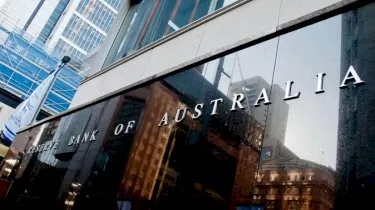Earn
RBA sets sights on 4% unemployment
The RBA has updated its key objectives in order to jolt the Australian economy into growth, including a two-decade low unemployment rate of 4 per cent.
RBA sets sights on 4% unemployment
The RBA has updated its key objectives in order to jolt the Australian economy into growth, including a two-decade low unemployment rate of 4 per cent.

The RBA has provided a snapshot of the current economic climate and how it intends to achieve economic growth into the future.
In order for Australia’s currency to be preserved over the longer term and for sustained economic growth, the RBA believes Australia needs to achieve its inflation target of between 2 and 3 per cent.
It is only then that the bank will consider lifting interest rates, despite not having done so since November 2010 — having held or cut rates 129 times in a row.
Despite history not being on its side, the RBA hopes pushing the economy to full employment could spark pay gains for workers and eventually lead to inflation growth.

“This assists businesses and households in making sound investment decisions, underpins the creation of jobs and protects the savings of Australians,” the RBA stated.
“Sustaining high employment means not only do more people have jobs, but they also have better opportunities in life. High rates of unemployment are costly for the economy and hurt our society.”
Australia’s labour market had been tightening rapidly, with a mix of fiscal support and an economic recovery led by pent-up demand lifting the need for workers.
The jobless rate had fallen to 4.6 per cent in July, but with much of the east coast now in its 10th week of lockdowns by the time the employment numbers were revealed, it was predicted they could already have been out of date.
As a consequence of prolonged lockdowns, unemployment is expected to rise in the coming months.
“The timing of the July labour market survey benefited from Victoria’s June reopening but mostly missed the impact of the NSW lockdown and Victoria’s July lockdown,” AMP Capital’s Dr Shane Oliver explained at the time the ABS data was unveiled.
Allowing for a fall in participation and an increase in those working zero hours indicates that “effective unemployment” actually rose to around 5.5 per cent.
“Official unemployment is likely to rise to around 5.5 to 6 per cent in August and September due to the lockdowns, but hours worked are likely to take the bulk of the hit,” Dr Oliver said.
Meanwhile, wages growth also softened over the June quarter, with only small pockets of wage pressure flowing from international border closures.
While the unemployment rate remains key to Australia reaching its inflation target, the RBA also said it recognises its monetary policy decisions have implications for the banking operations in the domestic market, but it underlined that one of its key objectives is to secure the stability of the financial system.
“There are several distinct aspects to the Reserve Bank’s role in the payments system, including those of policymaker, overseer and supervisor, and owner and operator of key national payments infrastructure,” it said.
As such, the central bank explained its role is to control the risk in the financial system, promote efficiency of the payment system and promote competition in the market for payment services.
Finally, the RBA explained its role with the government.
“Insofar as the Commonwealth of Australia requires it to do so, the Reserve Bank must act as banker for the Commonwealth. The Reserve Bank’s banking services fall into two components: those services provided in its capacity as the central bank, and those transactional banking services it provides to Australian government agencies,” it concluded.
About the author

About the author


Salary
GoCardless calls for stronger small business support following rejection of Payday Super extension
GoCardless has urged the federal government to increase support for small businesses after the House of Representatives voted against a proposed amendment to the Payday Super legislation that would ...Read more

Salary
The financial benefits of a diversified income stream
In today’s volatile economic environment, relying solely on a single source of income can be risky. Diversifying your income streams can provide financial stability, reduce the risk of financial ...Read more

Salary
Despite losing top spot, Elon Musk rakes in $400,000 hourly
Elon Musk, the entrepreneur known for his involvement in a wide range of innovative and technological businesses, has recently been dethroned as the wealthiest individual in the world, with Bernard ...Read more

Salary
Rising unemployment and skill shortages prompt Australian businesses to look globally for talent
Australia has witnessed its unemployment rate surging above 4% for the first time in two years, revealed by the latest Labour Force data. Read more

Salary
New findings link job mobility hurdles to stagnant wage growth
Recent research from the e61 Institute has unearthed significant links between slow wage growth in Australia and obstacles to job mobility, including non-compete clauses, complicated occupational ...Read more

Salary
Employers scrambling to prevent workplace brain drain
As workplace managers face a swiftly evolving employment market that’s increasingly favouring the demands of white-collar employees and jobseekers, bosses are falling under mounting pressure to ...Read more

Salary
Unions back Albanese’s pledge to close gender pay gap
An electoral promise from Labor to make gender pay equity an objective of the Fair Work Act has been hailed as a “watershed moment” from industry peak bodies who have traditionally advocated for ...Read more

Salary
Coles asked to disprove $115m in alleged wage theft
One of Australia’s biggest supermarkets faces allegations that it underpaid more than 7,500 employees a total of $115 million. Read more

Salary
GoCardless calls for stronger small business support following rejection of Payday Super extension
GoCardless has urged the federal government to increase support for small businesses after the House of Representatives voted against a proposed amendment to the Payday Super legislation that would ...Read more

Salary
The financial benefits of a diversified income stream
In today’s volatile economic environment, relying solely on a single source of income can be risky. Diversifying your income streams can provide financial stability, reduce the risk of financial ...Read more

Salary
Despite losing top spot, Elon Musk rakes in $400,000 hourly
Elon Musk, the entrepreneur known for his involvement in a wide range of innovative and technological businesses, has recently been dethroned as the wealthiest individual in the world, with Bernard ...Read more

Salary
Rising unemployment and skill shortages prompt Australian businesses to look globally for talent
Australia has witnessed its unemployment rate surging above 4% for the first time in two years, revealed by the latest Labour Force data. Read more

Salary
New findings link job mobility hurdles to stagnant wage growth
Recent research from the e61 Institute has unearthed significant links between slow wage growth in Australia and obstacles to job mobility, including non-compete clauses, complicated occupational ...Read more

Salary
Employers scrambling to prevent workplace brain drain
As workplace managers face a swiftly evolving employment market that’s increasingly favouring the demands of white-collar employees and jobseekers, bosses are falling under mounting pressure to ...Read more

Salary
Unions back Albanese’s pledge to close gender pay gap
An electoral promise from Labor to make gender pay equity an objective of the Fair Work Act has been hailed as a “watershed moment” from industry peak bodies who have traditionally advocated for ...Read more

Salary
Coles asked to disprove $115m in alleged wage theft
One of Australia’s biggest supermarkets faces allegations that it underpaid more than 7,500 employees a total of $115 million. Read more








